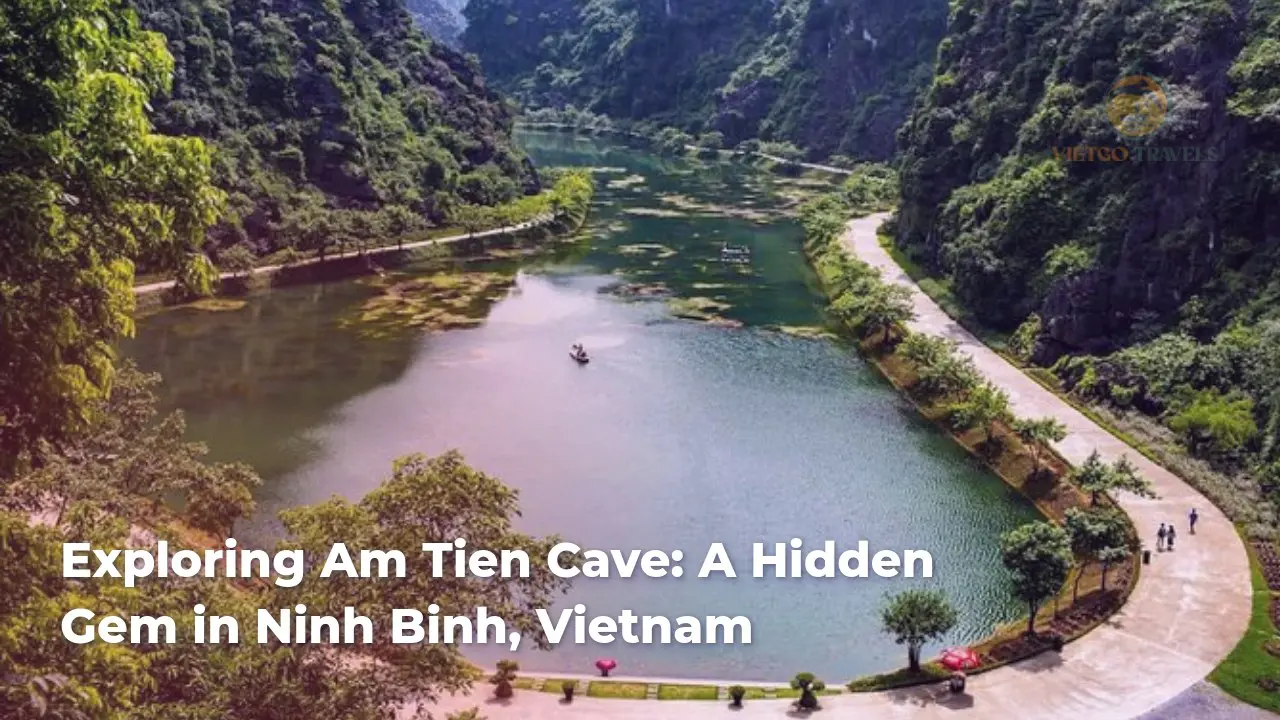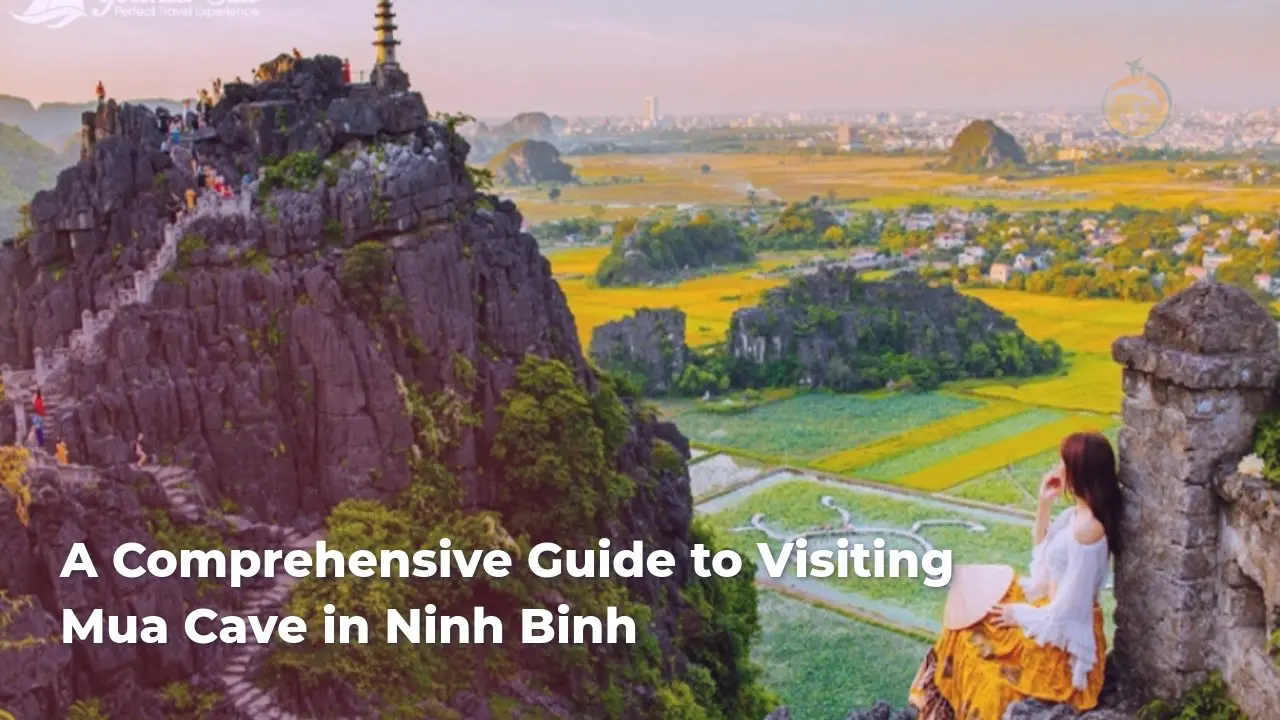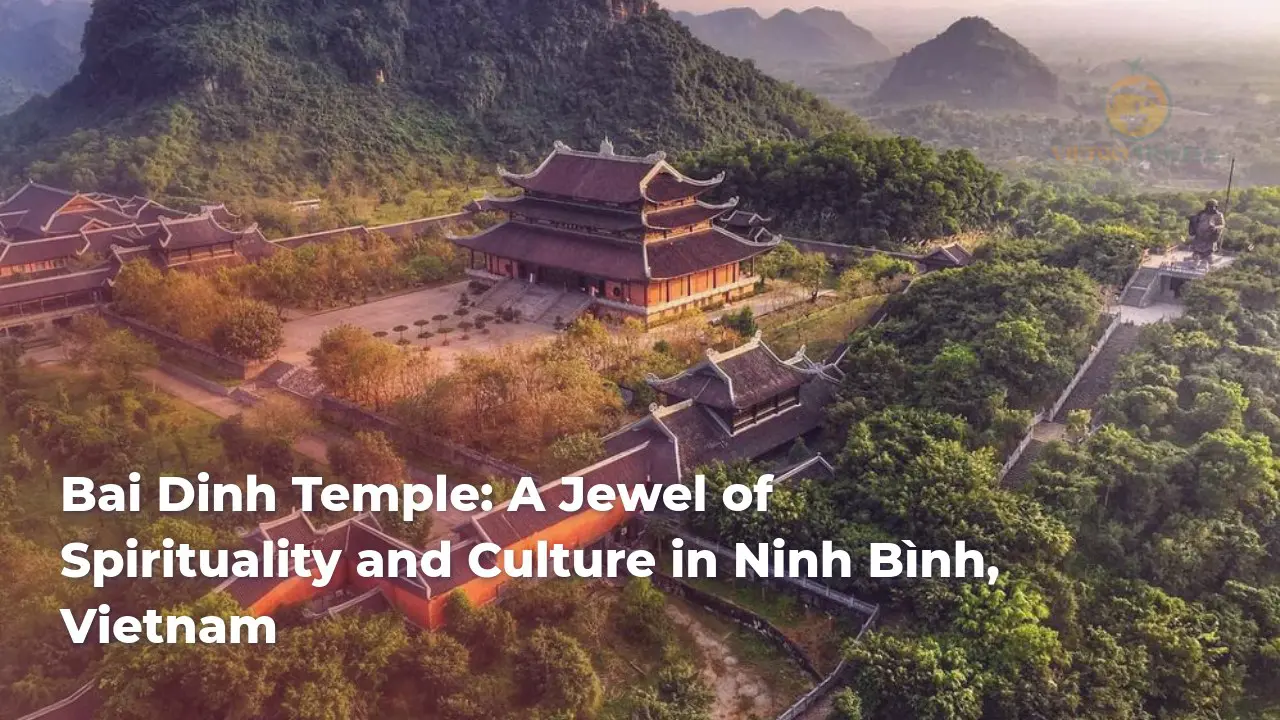
Am Tien Cave (Động Am Tiên – Tuyệt Tình Cốc)
Discover the secluded beauty of Am Tien Cave, a hidden gem in Vietnam’s Ninh Binh province, perfect for nature enthusiasts and adventure seekers.
Nestled in the heart of Ninh Binh Province, Vietnam, Hoa Lu ancient capital stands as a testament to the nation’s storied past. Recognized as the political center of the Dai Co Viet kingdom during the 10th and 11th centuries, its charm is not only rooted in its historical significance but also in the breathtaking landscapes that envelop it. Located approximately 90 kilometers south of Hanoi, the ancient capital captivates visitors with its combination of stunning natural beauty and rich cultural heritage. As we embark on this in-depth exploration of Hoa Lu, we will uncover its historical milestones, major attractions, annual festivities, and visitor tips, ensuring a comprehensive understanding of this remarkable site.

Founded in 968 AD by King Dinh Bo Linh, Hoa Lu emerged as the political, cultural, and economic heart of early Vietnamese civilization, particularly during the Dinh and early Le dynasties. The significance of this ancient capital can be traced back to its role in consolidating Vietnamese power and identity during a time of considerable upheaval and foreign influence. The capital remained a flourishing administrative center until 1010, when King Ly Thai To decided to relocate the capital to Thang Long, present-day Hanoi. This decision marked a pivotal transition in Vietnamese history, yet the legacies of the Dinh and Le dynasties continue to resonate within the hallowed grounds of Hoa Lu.
The ancient capital spans approximately 300 hectares, surrounded by impressive limestone mountains that not only enhance its scenic allure but also fortify its defensive capabilities. This geographical advantage played a crucial role in the early kingdom’s military strategies, allowing it to withstand external threats. The melding of nature and history at Hoa Lu creates an immersive experience for visitors, encouraging them to delve deep into Vietnam’s beginnings. As they wander through the ancient sites, one cannot help but feel a connection to the past and appreciate the resilience of the Vietnamese people.
Visitors to Hoa Lu are greeted by a plethora of attractions that highlight the site’s rich historical and cultural significance:
One of the most vibrant aspects of Hoa Lu is its annual celebration of the Truong Yen Festival, held in the third month of the lunar calendar. This festival commemorates the achievements of the Dinh and Le dynasties, encapsulating the cultural richness and historical narratives that define Hoa Lu. The festivities include a variety of activities such as traditional games, ceremonies, and performances that reflect the region’s rich cultural heritage. These events provide an opportunity for visitors to engage with the local community and witness firsthand the continued reverence for the ancient capital’s history.
The festival not only brings together locals but also attracts tourists eager to experience the authenticity of Vietnamese culture. It serves as a reminder of the resilience and vibrant traditions of the nation. Through the lens of the Truong Yen Festival, visitors gain insights into the customs that have shaped Vietnamese society and the enduring legacy of its historical figures.
Getting to Hoa Lu is convenient for both local and international travelers:
As you contemplate your journey to Hoa Lu, consider these factors to optimize your experience. Being prepared and informed about transportation and entry costs will help you make the most of your time at this historical gem.
To truly enjoy your visit to Hoa Lu, here are some recommendations:
In conclusion, Hoa Lu ancient capital is an invaluable treasure within Vietnam’s rich cultural tapestry, blending historical significance with natural beauty. It stands as a must-visit destination for those who wish to explore the origins of Vietnam’s unified state while experiencing its profound cultural richness. From the majestic temples steeped in history to the vibrant festivals that celebrate its ancient past, Hoa Lu provides a unique glimpse into Vietnam’s historical narrative. Whether you’re a history enthusiast, an avid photographer, or simply seeking a picturesque escape, Hoa Lu is sure to leave an indelible mark on your journey through Vietnam.

Discover the secluded beauty of Am Tien Cave, a hidden gem in Vietnam’s Ninh Binh province, perfect for nature enthusiasts and adventure seekers.

Explore the hidden wonders of Van Trinh Cave. Experience nature’s beauty with breathtaking formations. Perfect for adventure seekers!

Explore the magical Galaxy Grotto, Vietnam’s hidden gem, where breathtaking caves await. Plan your adventure today!

Discover Thung Nham Bird Valley’s serene landscapes and diverse wildlife. Plan your visit to this natural paradise and explore its unique ecosystems.

Discover Van Long Wetland, a serene nature reserve. Explore its rich biodiversity and breathtaking landscapes. Perfect for nature enthusiasts!

Explore Mua Cave for breathtaking views and cultural wonders. A must-visit attraction in Tam Coc, promising adventure and serenity.

Discover Cuc Phuong National Park’s diverse wildlife and lush landscapes. A must-visit spot for nature lovers and adventure seekers.

Discover the serene beauty of Bai Dinh Temple, Vietnam’s largest pagoda. Experience its rich history and stunning architecture on your journey.
Copyrights @2025 Vietgo Travels. Terms and Conditions Privacy Policy
Hotline
+84 855 452 888 (Viet Nam) / +1 (206) 665 3090 (US)
Email: [email protected]
Website: www.vietgotravels.com
Head Office:
No. 23 Lo Su Street, Hoan Kiem District, Ha Noi, Viet Nam.
Viet Nam’s branch:
No. 35 Hang Quat Street, Hoan Kiem District,
Ha Noi, Viet Nam.
US:
831 41st Pl, Everett, WA 98201, USA